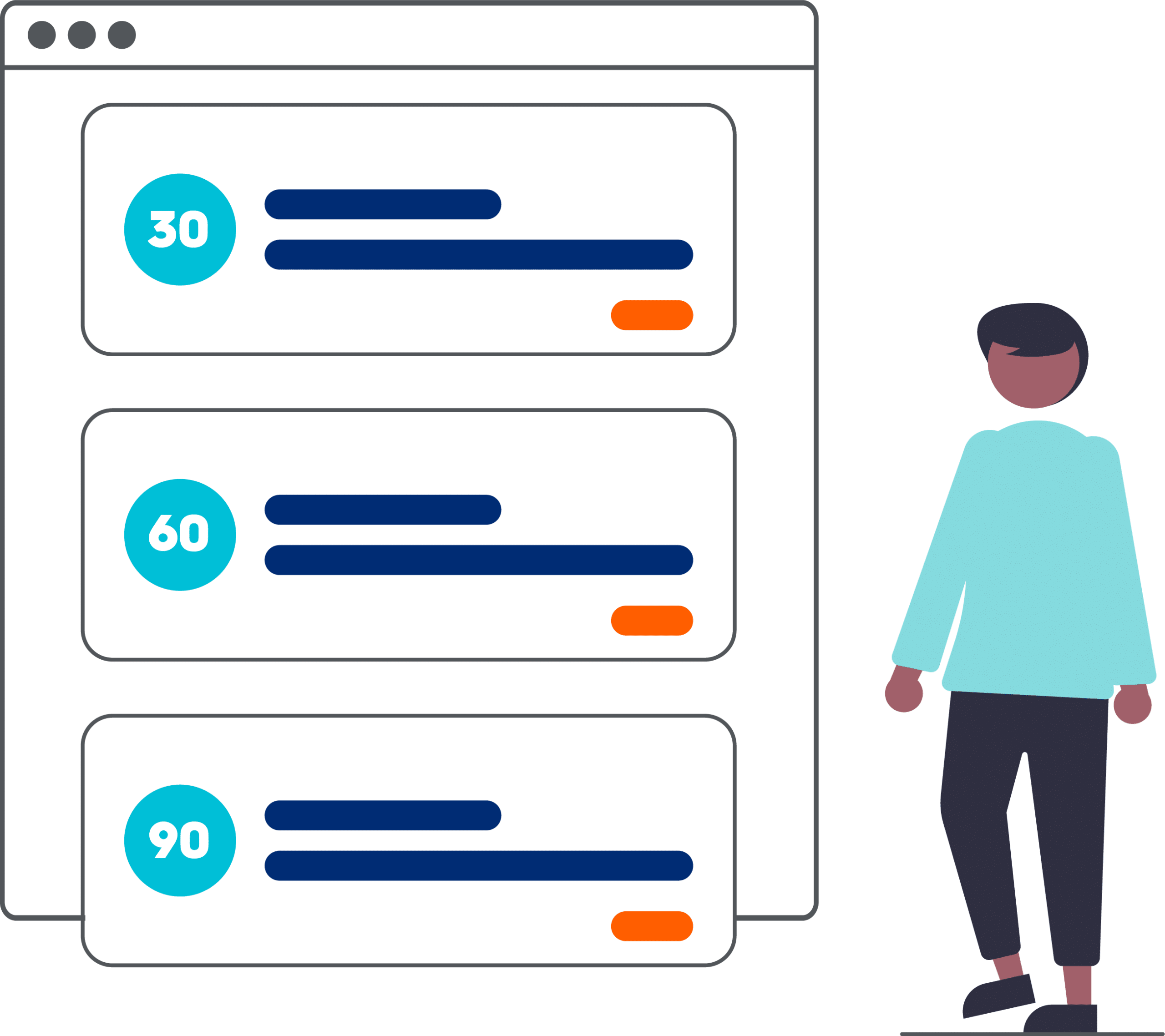You distributed your open job online, sat through a ton of interviews, evaluated your best candidates, and made a hire. You found someone that shares your values and has great potential and you’re excited about the impact this new employee will make on your business.
But before you throw your new employee to the wolves, it’s important to put together a 30-60-90 day onboarding plan with key milestones, goals, and metrics. Proper onboarding is the bridge from great candidate to star employee and can even impact your new team member’s tenure and engagement.
In this article, we’ll show you how to create an onboarding plan for the first 90 days and share a 30-60-90 day onboarding plan checklist to help you get started.
Why you need a strong onboarding process
Even though most superstar candidates are self-starters, they still need a strong onboarding process to help them become comfortable with their new role, and the people they will interact with.
A strong onboarding process helps new hires learn how to measure their progress and feel like they are making a contribution to the company. It will help get new hires up to speed sooner, so they can become valuable and productive members of your team. 69% of employees are more likely to stay with a company for at least 3 years if they had a positive onboarding experience.
On the other hand, a poor onboarding experience leads to turnover, which is an expensive and frustrating problem for any business owner. In one survey, 30% of employees that were dissatisfied with their onboarding experience said they started looking for a new job within the first three months.
What is a 30-60-90 day onboarding plan?
The first 90 days can be critical to a new team member’s success and their desire to continue with the company. This is an important time for new hires to learn about the company, the people that they will be working with, and their roles and responsibilities so they can become a star employee.
To do this, many companies set up a 30-60-90 day onboarding plan for new hires. This is usually a checklist that includes milestones and key meetings that help new employees learn, and eventually perform, during the first 90 days. Breaking it down into 30 day (or monthly) increments, makes it easier to track progress and create a structured approach for integrating new hires. Each phase of the plan has its own set of goals and objectives. Typically, this is broken down into a learning phase, integration or alignment phase, and an execution phase.
Download a free 30-60-90 Day Onboarding Checklist
We put together an onboarding guide and checklist for you to help increase employee engagement and boost career development. That way your new hires can become great hires, faster. Use these to get some quick wins with your new hires and help them get comfortable in their new role!
One thing we should note, this is not an all-inclusive list of steps you should have new hires complete during onboarding. Edit this list as needed to make it work for your business.

30-60-90 Day Onboarding Checklist
Use the free onboarding checklist designed by the Hiring Experts at CareerPlug for your own onboarding needs.
DOWNLOAD MY COPYHow to structure your 30-60-90 day onboarding plan
Setting onboarding goals for the first 90 days, and any amount of time in between can be difficult. Most of this time will be spent learning as employees try to become comfortable with their new role. When setting goals for the first 30, 60, or 90 days, we recommend using a mix of learning goals, performance goals, growth goals, and personal goals.
What should be included in an onboarding plan?
Learning Goals: These are goals that are focused on learning tools/software, any job knowledge needed, and about the company (mission, vision, values, etc.)
Performance Goals or KPIs (Key Performance Indicators): These are milestones or KPIs that need to be hit to ensure your new hire is succeeding. Many performance goals are numbers based and will carry over past 90 days.
Growth Goals: These are goals your new hire will set. These goals focus on ideas or ways that the new hire will establish themselves as a leader.
Personal Goals: These are goals that help a new hire grow as a person within and outside of the workspace. Setting personal goals can help new hires feel like they are part of a community rather than just another cog in the wheel.
Milestones: These are qualitative goals that help establish whether a new hire is doing a good job. Becoming familiar with product or service offerings can make for good milestone goals.
Remember, goal setting is most effective when following the “SMART” framework. All goals should be Specific, Measurable, Achievable, Realistic, and Timely.
Onboarding goals for 30 days
The first 30 days should be focused on learning about the company, responsibilities, and getting acquainted with managers. Consider setting up lunch or meetings for your new hire with their manager or department head (if applicable). This is a great time to introduce your new person to other teams and the company culture that they will be a part of.
New hires should also set learning goals so that they can become proficient in the tools, resources, and knowledge they will need to be successful at their job. This should include learning about any software, products, services the company uses or sells on a day-to-day basis.
Another important part of the first 30 days is reviewing milestones and KPIs. Even though new hires shouldn’t be expected to meet KPIs in their first week, or even their first month, it’s important that they have a good understanding of what they will eventually be measured on.
Consider giving new employees a realistic milestone goal during the first 30 days that they can complete. An example might be job shadowing someone for a week. When you add these milestone goals in, employees feel like they are hitting goals which helps them to find their new role more enjoyable.
The first 30 days will most likely be your longest list of items new hires need to complete since there will be a lot of set up before your employee starts contributing.
Onboarding goals for 60 days
By this point, new hires should really start to become more comfortable in the onboarding process. This is a time where they will be able to start taking on some long-term responsibilities, become familiar with other employees, and start to participate some.
While much of the learning should be completed by the end of the first 30 days, this is a good opportunity for managers to teach through feedback. If there are any areas that the new hire might need to improve in, this is a good time to surface that feedback.
This is also a great time to identify any knowledge gaps. Maybe your new hire didn’t know how to process a request from a customer or client. Maybe they don’t feel completely comfortable using the software or a point-of-sale system that they’ll be using on a daily basis. This is a good time to ask new hires what roadblocks they have come across or if they have any questions.
Onboarding goals for 90 days
By 90 days new hires should be able to start working independently on tasks or projects. They should be participating in any relevant discussions and be comfortable using any tools or software that need to be used.
During the end of the 90-day onboarding process, new employees should start working towards KPIs or any other goals that have been set forth. Make sure any knowledge gaps have been filled so that your new hires can become superstar employees.
They should also be taking on more longer-term responsibilities and proactively offering solutions or suggestions to any shortcomings. New hires should also have established trust among managers and other employees.
The last, but most important goal that should be completed during the end of the onboarding process is a 90-day review. This should be a formal discussion with your new hire that offers feedback and analyzes their performance during the first 90 days.
Key takeaways:
- Set goals for the first 90 days and create a 30-60-90 day onboarding plan.
- Goals should be a combination of learning goals, performance goals, growth goals, and personal goals.
- Make sure your goals are both qualitative and quantitative.
- It can be hard for new employees to hit on KPIs early on especially when they are still learning.
- Qualitative goals allow new hires to feel like they are getting quick wins and reaching goals.
- Onboarding isn’t just about learning and performing a job, it’s as much about creating lasting relationships that help your new hires grow professionally and personally. That’s how they will end up sticking around!
- The right onboarding tools can help you organize onboarding tasks and digitally share and store all of your employee’s important documents and training materials.
Streamline hiring and onboarding with CareerPlug
Learn more about how CareerPlug can help you hire, onboard, and retain your team by scheduling a demo with a hiring expert.



























